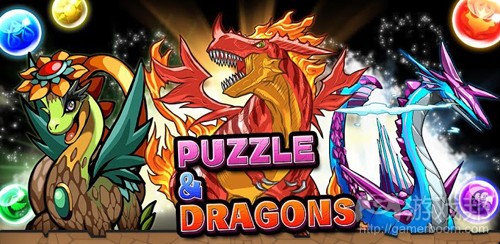手机游戏开发者进入亚洲市场的5大秘诀
作者:Jason Wilson
在今年的某一时刻,GungHo Online Entertainment的《智龙迷城》在一天内就赚到了375万美元的收益——他们就像是获得了一个印钞许可证一样。而很大一部分收益是来自日本市场。
所以不出所料,西方手机游戏开发者想要开发这一市场。来自Unity Technologies,Klab America,RenRen Games和Gamevil USA的代表在2013年GamesBeat的“如何在亚洲创造下一款数百万美元的手机游戏”的研讨会中给出了各自的看法。
秘诀1:寻找一个合作伙伴
Klab America的首席执行官Noby Ota强调了与其它公司合作将自己的游戏带向中国,日本或韩国的重要性。
Ota说道:“如果你有一个新想法,那就找到一个能够共同获得盈利的合作伙伴。”当提到将游戏带向日本排行榜前列时,Ota表示你并不需要社交机制——你的游戏必须具有社交性,就像基于行会的战斗。
秘诀2:迭代,迭代再迭代
主机游戏开发者经常会谈到续集,而每年的发行便是他们所谓的“迭代”。但如果你在韩国等市场进行缓慢的游戏更新,你便会摊上大麻烦。Gamevil USA总裁Kyu Lee表示,频繁的更新能够帮助游戏创造者利用特别的游戏内部事件而吸引玩家的注意,以此提高游戏的日活跃用户(DAU)。这也能够帮助发行商和开发者瞄准那些收益下降的区域,并添加一些事件或其它内容去提升收益。
Android游戏便是这一秘诀的受益方——比起iOS,开发者们总是能够更轻松地在Google Play更新游戏。
Lee说道:“基于Android你可以更快速地进行迭代。”
秘诀3:下拨,上拨
这与打电话没有任何关系。这是关于面向市场调整机制。座谈小组再次引用了《智龙迷城》作为例子。尽管这是日本最热门的游戏,但是在美国却并非如此。Ota认为原因在于,这对于美国玩家来说太过困难了,他们并不能理解日本玩家所熟悉的机制和盈利方法。
Ota说道:“在特定阶段,你必须花钱并思考一个适当的策略。”所以为了获取成功,亚洲游戏必须考虑“下拨”——让美国玩家能够更轻松地理解并尝试他们的游戏。Ota发现将硬核游戏变成中核游戏便是一种有效的方法。
相反地,如果要将西方游戏带到亚洲——日本或韩国玩家可能会觉得这些游戏太过简单,他们甚至不会使用游戏中的教程。
秘诀4:有机地成长
Unity Technologies的亚洲副总裁John Goodale已经在游戏产业打拼了数十年,在为世嘉工作期间他获得了许多有关亚洲市场的信息。当Unity正式进入亚洲市场之际他选择使用了“从小处开始”的模式。
Goodale说道:“最初我们公司在亚洲的负责人只有我一个。而现在我们共拥有4个办事处和65名员工。我们让业务能够独立生存与发展。”
秘诀5:中国与其它市场不同
手机游戏领域比起世界上的其它领域更加分裂。Renren Games的业务开发和法务副总裁Kim指出,与只需面对两个应用商店(游戏邦注:苹果和谷歌的应用商店)的美国不同,在中国你必须面对10至15个(或者更多)应用商店。
并且在这之后事情总是会变得更加复杂。在中国,你将拥有更多“中间人”——除了这些市场外,你还要在网络上销售游戏,应对电信公司,甚至需要与硬件产商交涉(中国是低端手机的巨大市场,如果你的游戏能够默认出现在这些设备上,这对你来说将会是个巨大优势)。
(本文为游戏邦/gamerboom.com编译,拒绝任何不保留版权的转载,如需转载请联系:游戏邦)
Want to bring your mobile game to Asia? Here’s 5 tips for moving East
By Jason Wilson
REDWOOD CITY, Calif. — At one point this year, GungHo Online Entertainment’s Puzzle & Dragons was making $3.75 million a day — it’s practically a license to print money. And a gigantic slice of that money comes from Japan.
So it’s no surprise that mobile-game developers in the West want to break into this market. Representatives from Unity Technologies, Klab America, RenRen Games, and Gamevil USA dished out some tips during the “How to Make the Next Billion-Dollar Mobile Game in Asia” breakout session at GamesBeat 2013 on Wednesday.
And it goes beyond “don’t try” (unless you want to bring a platform to China — RenRen Games’ Hans Kim says no to that).
Tip No. 1: Find a partner
Klab America chief executive officer Noby Ota stresses the importance of making a deal to work with another company to get your game into China, Japan, or South Korea, not going about it on your own.
“If you have a good idea, find a good partner on monetization,” Ota said. And when it comes to getting a game to pop in Japan, Ota said that you just don’t need social mechanics — your game must be social in the game, like guild-on-guild combat.
Tip No. 2: Iterate, iterate, iterate
Console-game developers will often talk about sequels and yearly releases as “iterations.” But if you updated your game so slowly in a market like South Korea, you’d be in big trouble. Gamevil USA president Kyu Lee said frequent updates enable gamemakers to increase special in-game events that draw in players — and helps make them daily active users (DAUs). This also helps publishers and developers target areas where revenue is down, adding in events and other things that could help boost those numbers.
And Android gaming is a benefit for this — it’s much easier to get updates on Google Play than on iOS.
“You can iterate faster because of Android,” Lee said.
Tip No. 3: Dialing down, dialing up
This has nothing to do with making phone calls. It’s about adapting mechanics for markets. Again, the panel cited Puzzles & Dragons as an example. While it’s the hottest game in Japan, it’s just not catching on in the U.S. Ota thinks he knows one reason — it’s just too complicated for American players, who aren’t conditioned for its mechanics and monetization in the same manner that Japanese players are.
“At a certain stage, you have to spend money and think of a strategy,” Ota said. So to be successful, the panel agreed, Asian games should consider “dialing down” — making their games easier to understand and play for American audiences. Ota noted that turning a hardcore game into a midcore game is a good way to accomplish this.
The opposite applies to bringing a game to Asia — it may be not complicated enough to work for the Japanese or South Korean audiences, who may not even be used to tutorials in their games.
Tip No. 4: Grow organically
Unity Technologies vice president of Asia John Goodale has decades of experience in the game industry, and he learned much about working with Asian markets during his time with Sega. He brought the “start small” model with him when Unity set up shop in Asia.
“We had one person in Asia — me,” Goodale said. “Now we have four offices, 65 staff. We let the business feed itself.”
Tip No. 5: China is different than any other market
The mobile game scene may be more fragmented than any other in the world. Kim, the VP of business development and legal for Renren Games, pointed out that unlike in the U.S., where you’re dealing with two app stores (Apple’s and Google’s — and Amazon’s if you’re being charitable), you’ve got 10 to 15 (or even more) in China.
And it gets more complex after that. In China, you have even more “middlemen” — in addition to these marketplaces, you have networks selling games, deals to cut with telecom companies, and even negotiations with hardware manufacturers (China is a huge market for low-end cellphones, and getting your game preinstalled on such devices is a huge advantage).(source:venturebeat)








































 闽公网安备35020302001549号
闽公网安备35020302001549号